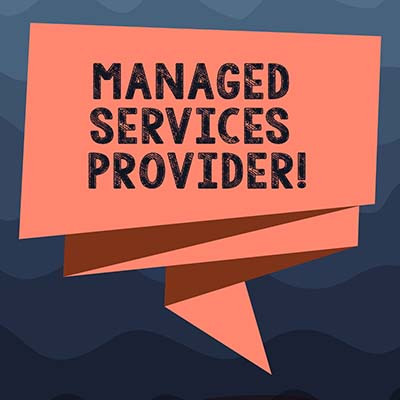Any computer issue you have can be extremely frustrating, but when something happens you should know you’re not alone. There are a few things that anyone that uses a computer has dealt with. This month, we take a look at three extremely common technical problems people deal with and what to do about them.
k_Street Consulting, LLC Blog
Every business relies on technology to function. Some wouldn’t be able to deliver any value to their customers without it, while others would be severely hindered if they suffered a data breach. For this reason, cybersecurity has to be a priority. In today’s blog, we will discuss five issues that business owners run into that can muddle their cybersecurity efforts.
Nobody likes getting large support bills from technology companies—especially when they are unexpected. This is the case for both the business owners footing the bill and the employees who might be held responsible for racking up the bill in the first place. This puts SMBs in a bit of an impossible situation; either spend money to keep employees productive, or save money and suffer from productivity issues.
Technology allows businesses to leverage high-impact practices, but only if that technology works the way it’s supposed to. Even simple issues with network connectivity problems, outdated technology, and cybersecurity can impact operations. The key to a successful technology deployment is understanding where potential disruptions could occur and taking measures to proactively address them ahead of time.
IT support is essential for businesses, but traditional on-site support can be expensive and inefficient.
Thankfully, remote IT support, such as that offered through managed services, is now available. This is a game-changer for small to medium-sized businesses. Let's explore the benefits of remote IT support.
Technology is a major pain point for just about all businesses, whether you’re a small mom-and-pop store or a medium-sized (and quickly growing) name in your community. You’ll always have the technology to upkeep, from computers and servers to software solutions or point-of-sale registers. This month, we want to discuss how managed IT solutions can help you maximize your resources by offering a simple, easy, and cost-effective alternative to hiring multiple in-house technicians.
Small and medium-sized businesses (SMBs) face the challenge of managing complex IT systems with very limited resources. Enter managed service providers, or MSPs, the guardians of IT that can help your business stay ahead of the game. An MSP's approach to IT support delivery offers many benefits that traditional IT support and even an in-house team might struggle to match.
Let's delve into three compelling reasons why our innovative approach is best for your IT support needs, especially if you want to scale up and streamline operations.
We love to highlight how technology helps businesses thrive, particularly small and medium-sized businesses with a lot of growth potential but limited by their budgets. This is why we provide SMBs with managed IT services specifically designed to drive business growth. If you have yet to consider outsourcing your IT needs, you could be missing out on a golden opportunity to alleviate many of the pain points your organization suffers from on a daily basis.
The entire premise of managed IT services is that they can save your business money, but in what specific ways does working with us make your budget more predictable? It’s really quite simple, and it encompasses three primary pillars: an established level of service, proactive maintenance and management, and the reliability and access to expertise that might otherwise put a stopper on your business’ potential.
All organizations rely on their information systems to be consistently available when required, with some businesses being unable to function without them. When these systems undergo necessary maintenance, such as software patches, it can pose challenges for employees who rely on their continuous availability. In this discussion, we delve into the proactive approach to IT maintenance, exploring its strategic benefits in preventing downtime for businesses.
IT is pivotal to the success of any business. Still, for small and medium-sized businesses, there might be limitations placed on the organization's potential resources to cover its needs. Outsourcing IT responsibilities to a managed service provider is a viable option for improving the odds of finding success with technology management for SMBs. Here’s what your business can stand to gain from working with an MSP.
Businesses that struggle with managing technology have a lot to gain by working with a managed service provider, or MSP. These providers are able to help businesses just like yours maintain and improve operations through the use of technology management tools and services. Here are three of the greatest benefits that working with an MSP can provide for businesses just like yours.
Businesses that don’t leverage managed services for their technology infrastructure are leaving a lot of money on the table, but it’s not always easy to see until you break down what the solutions really do for you. In isolation, they might not seem valuable, but when combined, they save your business significant amounts of capital.
Cloud computing has become one of the most utilized technologies in business today, and it doesn’t seem to be slowing down anytime soon. It makes it possible for nearly any business to acquire advanced technologies that they could not afford previously, and use them to level the playing field with larger, more capital-rich companies. This month we thought we’d talk a little bit about how moving to the cloud can benefit you and your business.
Even the most technology-literate of your average employees is not going to have the knowledge needed to manage and maintain your entire business infrastructure, and you shouldn’t expect them to, either. It takes a special kind of attention and training to manage complicated enterprise-level technology, but how can you make sure your business has access to these important resources?
Technology is not cheap, especially not business technology that has features that the average user might not find much value in. To help you keep your business from investing in the wrong solutions or spending unnecessary capital on solutions you won’t find useful, we’ve put together some of the common places where businesses like yours might accidentally waste hard-earned funds.
Apple has long been a key part of the technology industry, producing quality hardware year after year. Although Apple tends to produce sleek and high-end hardware running its proprietary operating systems, these devices are far from perfect and were especially controversial at certain points in the past.
Businesses need to adjust their technology to meet their operational goals. Oftentimes, this can be the difference between loads of inefficiency and things going smoothly. Unfortunately, it isn’t always easy to ascertain where your business should spend its capital. Let’s take a look at how you can match your technology with your operational goals.
There is an inherent value associated with outsourcing the management of your technology to a managed service provider, or MSP. With your team taking a more hands-off approach to technology, they can instead focus on being more productive. If you’re still on the fence about this approach to technology and business, then we have some questions you should consider asking if you are thinking about learning more about MSPs and what they do.
Let me ask you a question: if you had a toilet that needed repairing, would you rather trust a plumber with a few decades of experience or a toddler that had just (mostly) learned how to use the toilet?
That’s what we thought… but when it comes to your business’ technology, finding someone with experience can be a bit more challenging. Let’s discuss the way that the right IT management produces improved business outcomes.
If you work with technology, then you are likely to have a good idea of what innovation is and isn’t. Innovation is born from creativity, and while it’s not often associated with business IT, there is something to be said for how technology professionals solve problems in a creative fashion, solving problems with solutions available either in-house or on the market. Today, we are focusing on how this creativity can be an asset and how you can foster creative thought in your office.
It’s fair to say that, across the board, times have been particularly tough as of late for businesses. On top of businesses having to fight through the socioeconomic crisis created by the COVID-19 pandemic and the supply chain issues, they also have to juggle more data than ever.
In short, businesses need reliable and cost-effective ways to manage their critical technologies.
In today’s business world that is so reliant on technology, there are few issues more disruptive than a computer that is not working properly. When your computer stops working and you have no clue what to do next, who is first on your calling list for assistance? Do you have someone on-hand who can resolve your technology problems?
How does your business manage its IT resources? Do you have a chief information officer, or CIO, in-house who manages everything related to your technology? If not, who is the one responsible for managing and maintaining your systems? If you don’t know the answer to this question, we have a reality check for you: you need to.
If you don’t properly maintain your technology, then it’s simply not going to be one of your company’s strengths. It’s a simple statement, but it’s one that many modern businesses fail to act upon. A managed service provider can make it much easier to get the technology maintenance your business needs to succeed. Let’s take a closer look at the people who deliver these services to your organization.
Network security is one aspect of your business that absolutely should not be underestimated. In fact, many companies fail to adequately monitor their networks, and it can lead to many complications down the road. Why is it so critical to monitor your network, and how can you make sure that your business is actually doing it?
When something goes wrong, it makes sense that you have a process in place to go over the issue and find a solution. This process, also known as troubleshooting, will have several variables that must be accounted for, but the general process itself remains unchanged. Here are the five steps to troubleshooting any problem, as well as ensuring that the issue does not become more problematic in the future.
To be adept at a task is to say that the one doing the task is a professional, or someone with substantial knowledge that can be used to effectively complete the task. Cybersecurity is one such area where having a considerable amount of knowledge is of particular importance to help navigate the complex environment surrounding it. How can your organization achieve this level of mindfulness and expertise?
Technology support is a necessity for a business that wants to stay operational. To this end, a quality help desk is vital. Unfortunately, not all help desks have the same level of quality and knowledge on how to best support your business. We’ve put together a list of traits that you should look for when it comes to finding the best help desk support for your business.
For most businesses, technology is a complete necessity these days. It’s been proven that, by integrating some technology strategically, businesses can solve major operational problems that many smaller businesses and startups can’t. Today, we will ask three questions about business tech that any technology-savvy individual should know, and explain why you should know them.
Managed IT services have grown from a niche offering to a well-known concept in recent years, with many businesses already relying on outsourced IT services to some degree. In many ways, this only makes sense, as it allows businesses to enjoy access to services that would otherwise cost too much for them to independently adopt and support.
Considering that 2020 was… less than great for many businesses, it should come as no surprise that there will likely be difficulties that carry on for some time into 2021. Naturally, these difficulties will require some new ideas and fresh thinking to properly resolve, as well as an openness to adopting innovative technologies. Let’s look ahead to some of the IT challenges we anticipate that 2021 will hold for businesses.
For most people, the term tech support is pretty self-explanatory. The terms managed services and MSP… not so much. Let’s go over what makes managed services and what we do as a managed service provider so different from the IT support you may be used to. To start, we’ll review where the idea of an MSP came from, and end with what one like us can do for you.
When you see that we offer tech support, you almost certainly have an idea of what that means. However, upon hearing about our typical service delivery for the first time, many people are really surprised by how different our services—as a managed service provider—are. These differences are not an accident. Let’s go back in time a little while to explore how managed services came about, and what difference they could make for you.
Your business depends on a budget to come out in the black at the end of the fiscal year, and the way you invest that budget will have a considerable impact. As you create this budget, your IT needs to be one of your top considerations… after all, it is what effectively powers the modern business. This month, we’ll discuss how diligently incorporating your IT into your budget can help your business be more successful down the line.
Working in IT for any length of time will make you understand that it isn’t just novice workers that have trouble with their computers. In truth, about seven out of ten people can’t diagnose and fix simple IT problems. With that truth, it’s evident that any business that relies on IT, or at least on the productivity of people who use workstations, needs to have some type of strategy to keep those endpoints up, running, and managed proficiently.
Okay, time for some real talk: There is no denying that 2020 has held a few unique challenges for everyone who runs a business. Economic challenges, political tensions, and an honest-to-goodness pandemic have all thrown us all for a loop. As a result, it is important that businesses all adjust their technology priorities to survive. Let’s discuss these priorities, and how they will need to shift.
With less than half of 2020 behind us, many of us would already like a re-do of this year. With a global emergency impacting the personal and professional lives of so many, businesses are struggling right now. For these organizations to survive, they will need to get the most out of every business investment. When it comes to their essential technology, we recommend investing in managed IT services.
While managed services have made more sense for businesses to utilize for some time now, current events have made it even more apparent that this model of IT support is the only feasible option for businesses going forward. However, it has also never been clearer that you need to be selective in who you choose to provide this support.
As the workers that power many businesses are remaining at home, remote solutions have proven to be a significant tool in keeping productivity moving. However, with nobody going into the office, monitoring your IT environment is necessary to make sure that the infrastructure you depend on is still in the right conditions. For this week’s tip, we’ll discuss some best practices to help you do so.
The modern business uses IT in so many ways that aim to make a business move faster, be more efficient, and ultimately, produce more than it would have without that technology. Each of these technologies are powerful in their own right, but they depend on two variables: electricity and a reliably fast Internet connection. When your Internet connection isn’t doing your business any favors, you need to look into why you aren’t getting the network speeds you are paying for. After all, your business depends on it. Today, we will take a look at a few ways you can go about troubleshooting a slow Internet connection.
When you think of professional services, you may think about smart people doing important things that took them years to learn how to do. You may not, however, consider them the kind of people that lean on their technology to make their businesses work. This is because for the longest time, technology wasn’t a major part of the professional services landscape.
Old-school business information technology support isn’t necessarily wrong, but it most definitely isn’t cheap nor efficient. IT support strategies are developing in ways that some time ago, would have thought to be unheard of. Your business no longer needs a full on-site staff designated to maintaining network security or updating software. In part two of our five-part series, we discuss how your business can have the support it needs through managed services.
Working in an office can often be a grind. People that have never experienced it may not realize just how much coordination is needed to perform successful service delivery and support. One way the modern office functions is with the help of integrated technology. This month we will take a look at the modern office, the technology used by the office staff, and how the managed IT service provider can help build operational efficiency.
Many businesses struggle with the reality of everyday IT issues, one of which is receiving the right kind of support and maintenance to ensure everything goes according to plan. When considering your business’ IT maintenance and management, you need to consider the service provider, the distance they travel to and from your office, and ease of support. How can you make sure that your business finds the right solution or service?
Downtime is a killer for any business. When a business is forced into confronting its technology support deficits, it usually means that they’ve been dealing with too much broken technology and downtime, and the costs associated with it. One way your business can avoid losing huge chunks of time to broken technology is to add a professional help desk to support your IT administrator.
Whether they are expected or not, there will always be situations when your business incurs some damage or loss due to natural disasters, downtime, or other issues. You might find that a little preparation could have kept some of the disaster at bay, and it could honestly save you a ton in terms of lost time and resources. In fact, it could save your organization from the brink of disaster.
It doesn’t matter how intensively a business uses their technology, there will always be a need for maintenance of some sort, whether it’s something as simple as a point-of-sale system or a full-fledged desktop workstation. Some businesses might have a complete IT department, while others might not have the resources to allocate to this role. We’ll walk you through how, no matter what kind of organization you operate, your business can benefit from a help desk solution.
Do you know what can completely kill a business’ momentum? Downtime. Businesses of all types look for a myriad of ways to save themselves the headaches that come from significant downtime. One way that is sure to reduce an organization’s downtime is by having conscientious IT management and support at the ready. One problem with this is that it's typically costly to hire a team of IT professionals with the experience and knowledge to keep your technology up and running.
Business owners; ever sit down and run through all of your expenses and ask yourself (or your accountant) what you are actually paying for? We’ve been there. Technology expenses like hardware, software licensing, cloud hosting, management and maintenance, support, and service agreements all add up quickly and it makes it easy to question what you can trim to save money without sinking the ship, especially when you rarely need to call your current IT provider.
Let’s be real: the title “managed service provider” doesn’t cast much insight into what we do on a daily basis. Even when people understand what we do, there are a lot of parts that confuse them and lead them to false conclusions. As a result, we wanted to take a few minutes and go over what it is that we do for our clients.
Businesses these days rely on technology in order to function properly, but what happens when this technology doesn’t operate as intended? If your organization doesn’t have a dedicated help desk on-premise, you’re probably suffering from unnecessary downtime and technology troubles with no recourse.
It’s only natural that new and improved technologies will be challenging for employees to embrace and become accustomed to using. These challenges tend to shape how businesses will make their decisions as time passes. A few industry research firms have released their projections as to what challenges businesses will face in the coming months of 2017.
One of the key benefits of managed IT services is right in the title. It’s managed, meaning that you don’t have to worry about maintaining or configuring your systems. Many small businesses see these kinds of advertisements out in the world but don’t necessarily understand what services are being marketed to them. We’ll take a deep dive into what you can expect from “managed” services for your organization.
Technology is necessary for so many businesses, but some don’t know how best to approach managing it. This is particularly difficult for businesses that have limited budgets and workforces, which leads organizations to simply go without the support in favor of saving some cash. Of course, when something goes wrong, it’s more noticeable and could cause major troubles in the future. This break-fix IT is far from the best way to approach IT maintenance, but how can you make sure your budget doesn’t suffer from it?






































































